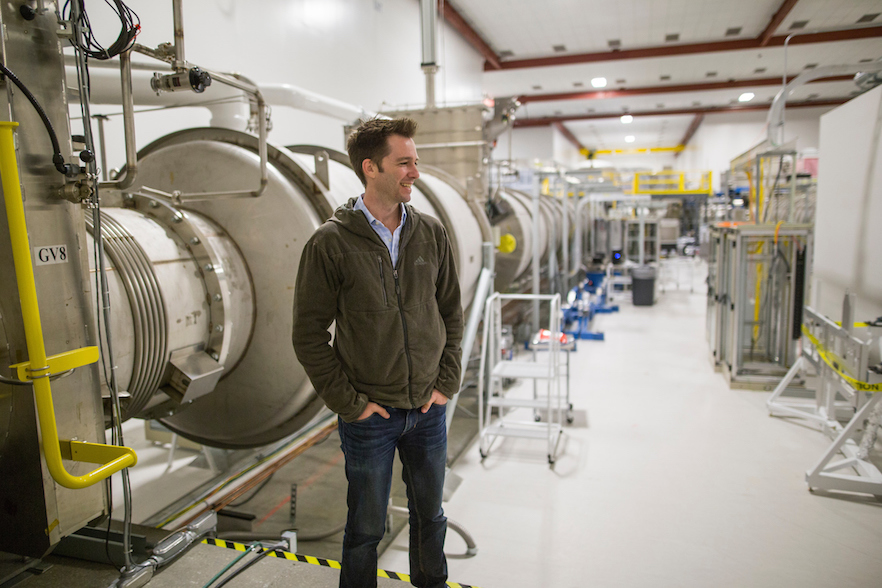Whitman professor involved in Nobel Prize-winning research

Whitman College Assistant Professor of Physics Greg Vaughn-Ogin cheered when the recipients of the 2017 Nobel Prize for Physics were announced earlier today. With good reason. He is one of more than 1,000 scientists, engineers and researchers involved with the trailblazing work of new Nobel Laureates Barry C. Barish, Kip S. Thorne and Rainer Weiss and the Laser Interferometer Gravitational-Wave Observatory (LIGO) and Virgo scientific collaborations.
The Royal Swedish Academy of Sciences bestowed the trio the honor "for decisive contributions to the LIGO detector and the observation of gravitational waves," according to press materials. The latter, ripples in space-time, were predicted a century ago by Albert Einstein and may help reveal the origins of the universe.
Vaughn-Ogin called the three physicists towering giants in the field and in the history of the LIGO Project: "They have all done really difficult and groundbreaking things to make the dawn of this field a reality."
The Linde Professor of Physics Emeritus at the California Institute of Technology (Caltech), Barish is a former LIGO director who spearheaded proposals to create the interferometer detectors in the 1990s; Thorne, the former Feynman Professor of Theoretical Physics at Caltech, is an expert on astrophysics and Einstein's general theory of relativity. Weiss, affiliated with the Massachusetts Institute of Technology, invented the laser interferometric technique used by the project's detectors. Weiss earned half of the $1.1 million prize; Barish and Thorne split the other half.
In fall 2015, LIGO made the first-ever detection of Einsteinian gravitational waves—the result of two black holes colliding more than 1.3 billion light years away. The Virgo Scientific Collaboration confirmed LIGO's findings, in one example of the projects' collaboration. According to Vaughn-Ogin, who has a role on the vast LIGO team, the discovery "has already started opening a new window on the universe."
The Nobel committee's recognition for LIGO, based jointly at the Hanford Site near Richland, Washington, and in Livingston, Louisiana, and Virgo, based in Italy, also "provides a great opportunity to share the excitement we scientists have for the project with people who don't spend their lives thinking about black holes and ultra-precision measurement," he added.
The latter field is where Vaughn-Ogin's research comes in. Since his time as a doctoral candidate at Caltech, he has studied the properties of the thin-film materials that make up the surfaces of the mirrors used in LIGO's detectors, with the goal of improving accuracy.
"I've also spent some time on the actual instruments looking for noise sources and glitches—things that could masquerade as gravitational wave signals. The work has been fascinating and very rewarding, knowing I've done my small part in this collaboration that together is doing such amazing things."
Bringing physics into the news is also important, Vaughn-Ogin said.
"I try to make a habit of talking to all of my classes on days when the Nobel is announced. It's a good way to bring up topics that might not otherwise be on the syllabus—LEDs, the expanding universe, exotic states of matter—at a time when they're also hearing about them in the news."
The Nobel win will likely increase visibility for gravitational wave physics, Vaughn-Ogin added.
"Detectors are being built all over the world, and the kinds of big discoveries we had hoped to make from seeing events like black hole mergers have really only just begun."